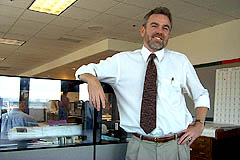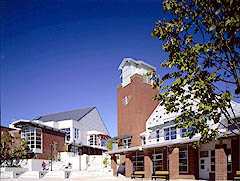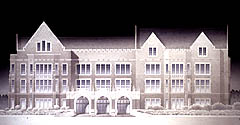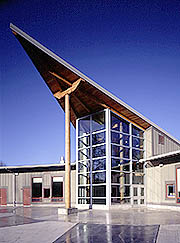|
Subscribe / Renew |
|
|
Contact Us |
|
| ► Subscribe to our Free Weekly Newsletter | |
| home | Welcome, sign in or click here to subscribe. | login |
Snapshots
| |

July 21, 1999
Lorne McConachie, Bassetti Architects

By SAM BENNETT
Journal Staff reporter
Lorne McConachie, principal
Firm: Bassetti ArchitectsOffice: 71 Columbia St.
Staff size: 42
Recent local project: West Seattle High School
Q: What sort of projects does your firm do?

|
|
Lorne McConachie, principal at Bassetti Architects |
Q: What are a couple of your favorites?
A: One of my favorite projects is the Edmonds-Woodway High School. It's kind of a village plan. What was particularly exciting about this project was that we did a great deal of community involvement in the planning process.
We developed a process called scenario planning. We asked: how are we using schools today and how are we going to use them in the future? How do we make a design that begins to respond to a variety of educational needs and an evolving educational curriculum rather than designing for one or two curriculms?

|
|
Edmonds-Woodway High School is a "learning village." |
We broke the school down into smaller units and incorporated community use into the school. Technology was interspersed throughout the school. Accessible raceways made upgrades in wiring much easier as technology changed over time. The design is contextual in referencing to the community of Edmonds.
Mary Gates Hall at University of Washington is one of the projects I'm really excited about now. It used to be the physics building and is being converted to a center for undergraduate studies. There is a major computer drop-in center, a special study area for undergraduate programs and a teaching facility for professors. It's one of the historic collegiate gothic buildings on campus. We're extending that gothic fabric of the old building. I was surprised how flexible the gothic vocabulary is. It actually is a very modern style in the sense of being able to manipulate the form to adjust to the spacial needs of the project.
Q: With Mary Gates Hall and other projects you seem to avoid high-profile design. Why is that?

|
|
Mary Gates Hall will be completed in early 2000. |
Q: What local architecture do you admire?
A: What I really value about Seattle is some of the historical districts and the way we have kept them and extended them as meaningful places. Pike Place Market comes to mind as a place where no individual building is the focus of what the market is - it's the backdrop for people who use it. We need to look at the extension of a building out into its neighborhood and out into the community and how it serves to link and differentiate various areas of the city.
Q: Does Fred Bassetti still play a role in the firm?

|
|
Wahelut's design celebrates the Native American community and accommodates kindergarten through ninth-grade students at Frank's Landing on the Nisqually River. |
Q: What drew you to architecture?
A: I've been an architect since age 5, I just didn't realize it until I got older. I've been designing things since I was a boy. My father was very interested in Frank Lloyd Wright. He built the home I grew up in, which was significantly more modern than most of the homes around it. I was very proud of it as a child. I moved to the Northwest in early '70s to go to architecture school. I felt a real affinity to the elegant landscape of the Northwest, from the underlying geology to the huge trees. It's a powerful landscape that has a great effect on the way I look at design today.
Previous columns:
- Kenichi Nakano, Nakano Associates L.L.C., 07-14-1999
- Kurt Nordquist, Skilling Ward Magnusson Barkshire, Inc., 07-07-1999
- Douglas Bailey, Integrus Architecture, P.S., 06-30-1999
- Amy Haugerud, RoseWater Engineering, Inc., 06-23-1999
- Karen Braitmayer and George Hallowell, Studio Pacifica, Ltd., 06-16-1999
- Fulton Tony Gale III, 06-09-1999
- SKB Architects, 06-02-1999
- Shawn R. Pickerill, Space, 05-26-1999


